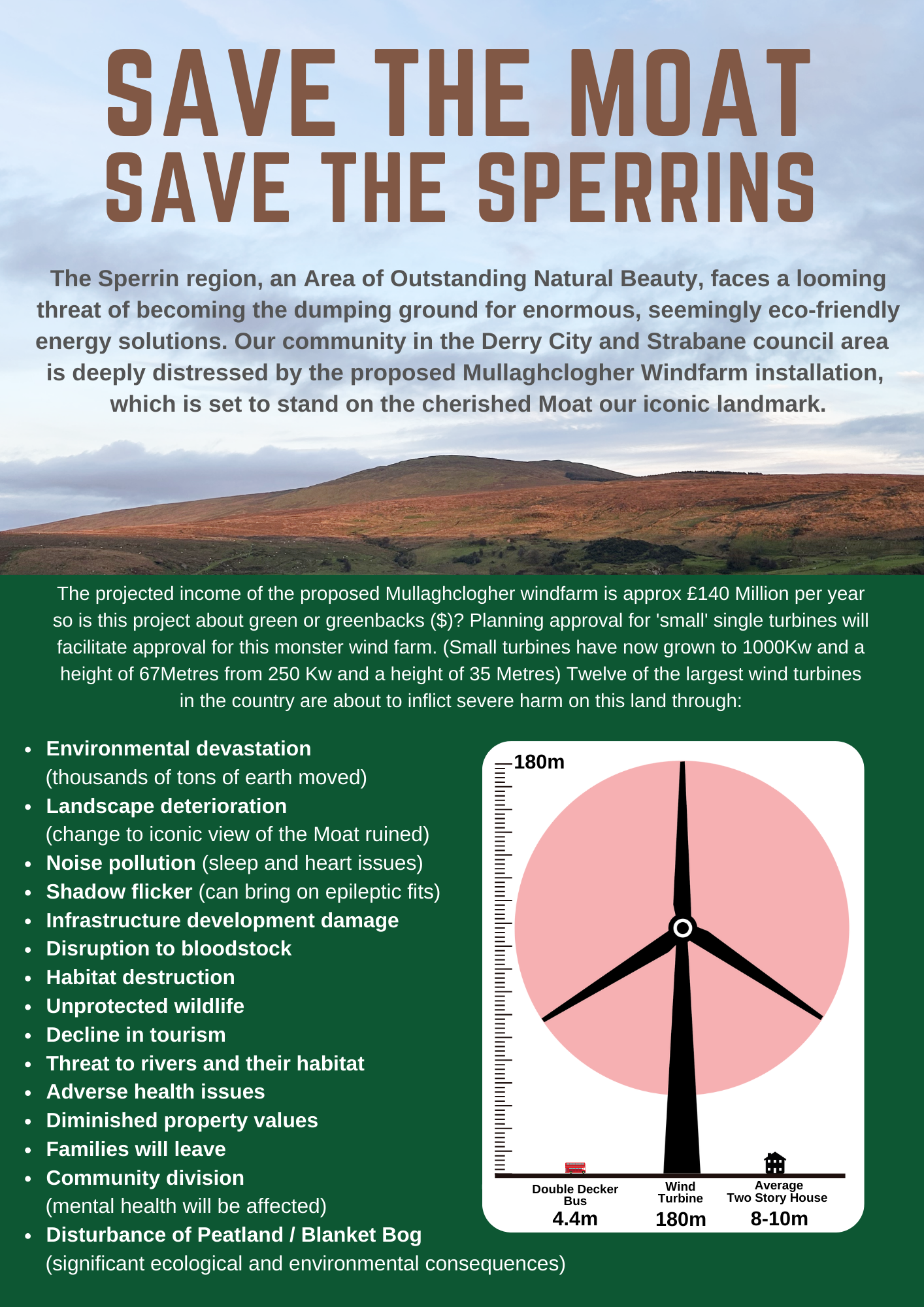
SAVE THE MOAT - SAVE THE SPERRINS
OBJECT NOW
JUST FOLLOW OUR SIMPLE STEPS BELOW
Option 2 – Protect the Sperrins: Object to the Mullaghclogher Wind Farm
Use the email text below to send your objection directly to the Department for Infrastructure (DfI)
📌 Instructions:
1. Copy the text below.
2. Open your email and paste it into the body.
3. Add your full name, address, and postcode at the bottom.
4. Send it to: planning@infrastructure-ni.gov.uk
Dear Sir/Madam,
I am writing to submit a formal and unequivocal objection to planning application Ref: SPD/2025/0011/F, which proposes the construction of an industrial-scale wind farm at Mullaghclogher, within the Sperrin Mountains.
This proposal constitutes a serious and indefensible breach of established planning policy and poses a profound, irreversible threat to one of Northern Ireland’s most protected and environmentally sensitive landscapes. The proposed site lies squarely within a Special Countryside Area (SCA) and an Area of Outstanding Natural Beauty (AONB)—designations that are not symbolic, but legally and strategically intended to prohibit precisely this type of large-scale industrial development. The application is in direct and fundamental conflict with these protections. Moreover, it undermines the core objectives of the Derry City & Strabane District Council Local Development Plan (2032), which explicitly prioritises the preservation of landscape character, biodiversity, and visual amenity within SCAs and AONBs. Approval of this application would not only violate the letter and spirit of this framework—it would set a dangerous and far-reaching precedent, eroding public confidence in the planning system and compromising the credibility of environmental safeguards across the region.
The development comprises 11 wind turbines, each reaching up to 180 metres in height, along with extensive associated infrastructure including access roads, substations, and battery storage. This constitutes a major industrial intrusion into a highly sensitive upland environment. The visual impact would be catastrophic, with the turbines dominating the skyline and permanently disfiguring the natural contours of the Sperrin Mountains. The Glenelly Valley, nationally recognised for its scenic value, would be particularly affected, with the turbines clearly visible from multiple vantage points across the region.
The environmental consequences of this proposal are equally serious. The site includes peatland habitats, which are vital carbon stores and highly sensitive to disturbance. The construction and operation of this wind farm would result in habitat destruction, peat degradation, and long-term ecological damage. These impacts are not speculative—they are well-documented outcomes of similar developments in comparable environments. This application will also have serious impacts on the rich biodiversity of the area directly impacting the River Foyle and Tributaries Special Area of Conservation (SAC) and Aughabrack ASSI, an important raised bog. Numerous protected species of birds, mammals (including 7 species of bat), and plants have been documented on this site and in nearby areas.
In addition to environmental and visual concerns, there are well-established public health risks associated with large-scale wind turbines. These include low-frequency noise emissions, which can cause sleep disturbance, stress, and other adverse health effects for nearby residents. Furthermore, shadow flicker can lead to significant discomfort and, in some cases, trigger neurological symptoms in sensitive individuals. These impacts are particularly concerning in rural areas where ambient noise levels are otherwise low and visual disruption is more acutely felt.
The Sperrins are internationally recognised for their rich archaeological heritage, with numerous ancient monuments and historical landscapes. The industrialisation of this area would undermine its cultural identity and sever its connection to centuries of rural tradition and heritage.
This is not a marginal issue. It is a matter of landscape-scale transformation, with consequences that would be permanent, far-reaching, and entirely avoidable. Mullaghclogher is not an appropriate location for industrial energy infrastructure of this magnitude. The scale, siting, and environmental sensitivity of this area, render this proposal entirely unacceptable.
I urge both the Derry City & Strabane District Council and the Department for Infrastructure planning committees to reject this application in its entirety. The long-term public interest lies in the preservation of the Sperrins, not their industrialisation.
Yours faithfully,
[Full Name __________________________________________]
[1st line of Address ______________________________________________________________]
[Post code ______________________________]
Date: (_______________)

Planning Application is now live
Planning Application is now live
The Moat
Mullaghclogher ([Mullach Clochair) is a mountain summit in Sperrin Mountain range in the counties of Derry and Tyrone, Ireland. Locally, Mullaghclogher has been known as ‘The Moat’ for generations. Mullaghclogher is 572 metres high with a prominence of 130 metres. The Sperrin Mountains is an Area of Outstanding Natural Beauty (AONB). This summit is arguably the most iconic view in the Sperrins and is etched in the minds of local residents and beyond for countless generations. The proposed Industrial Wind Farm is in the heart of this unique environment with its own rich culture and history.
The Turbines
The introduction of 11 wind turbines measuring up to 180 metres in height would have a detrimental impact on this part of the Sperrins AONB. This unique environment would be damaged beyond repair for future generations. The scenic quality of the Sperrins AONB would be compromised forever.
Prepare to Object
Your voice matters. Take a look at our objection letter details and how you can object.
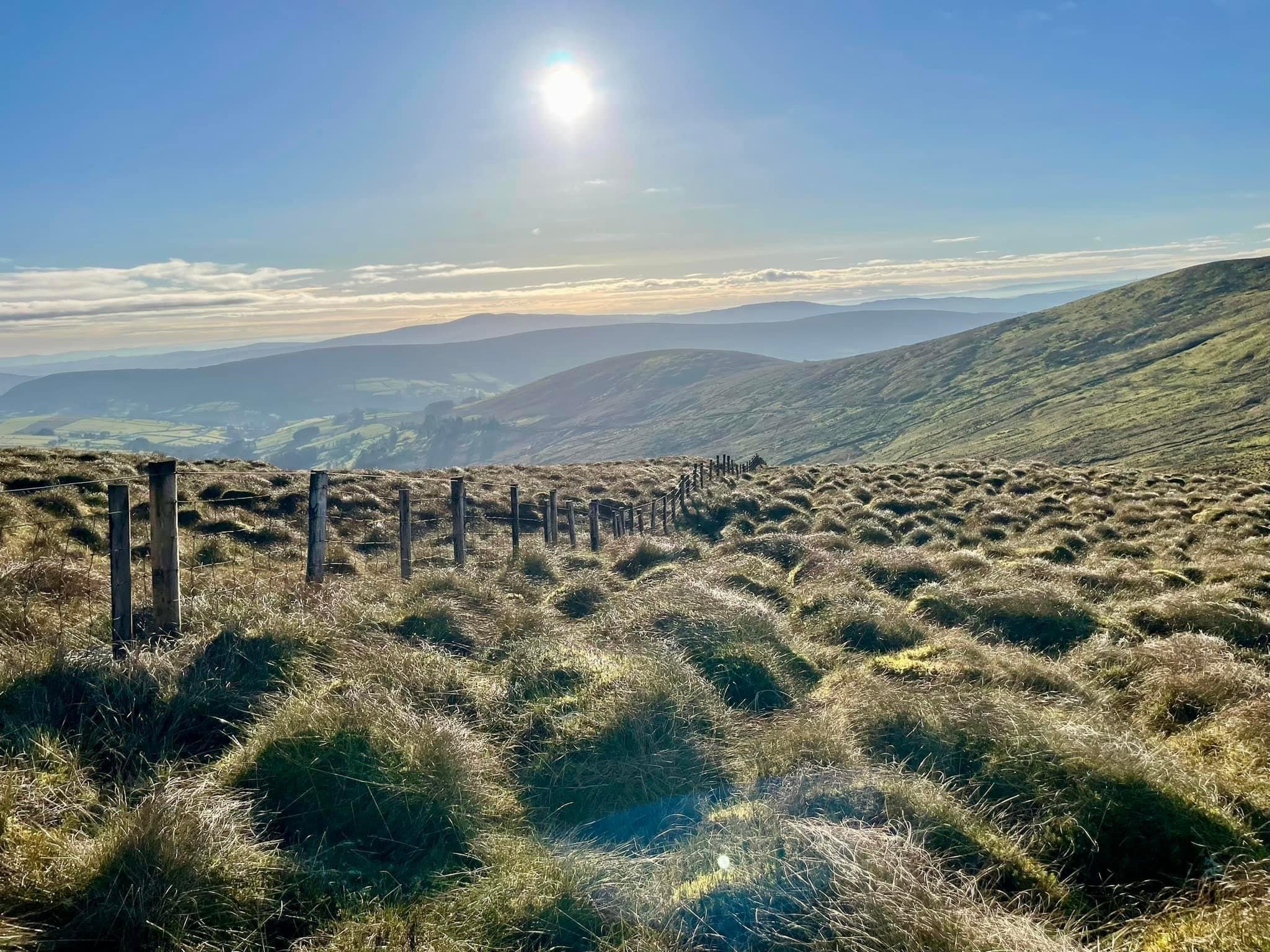



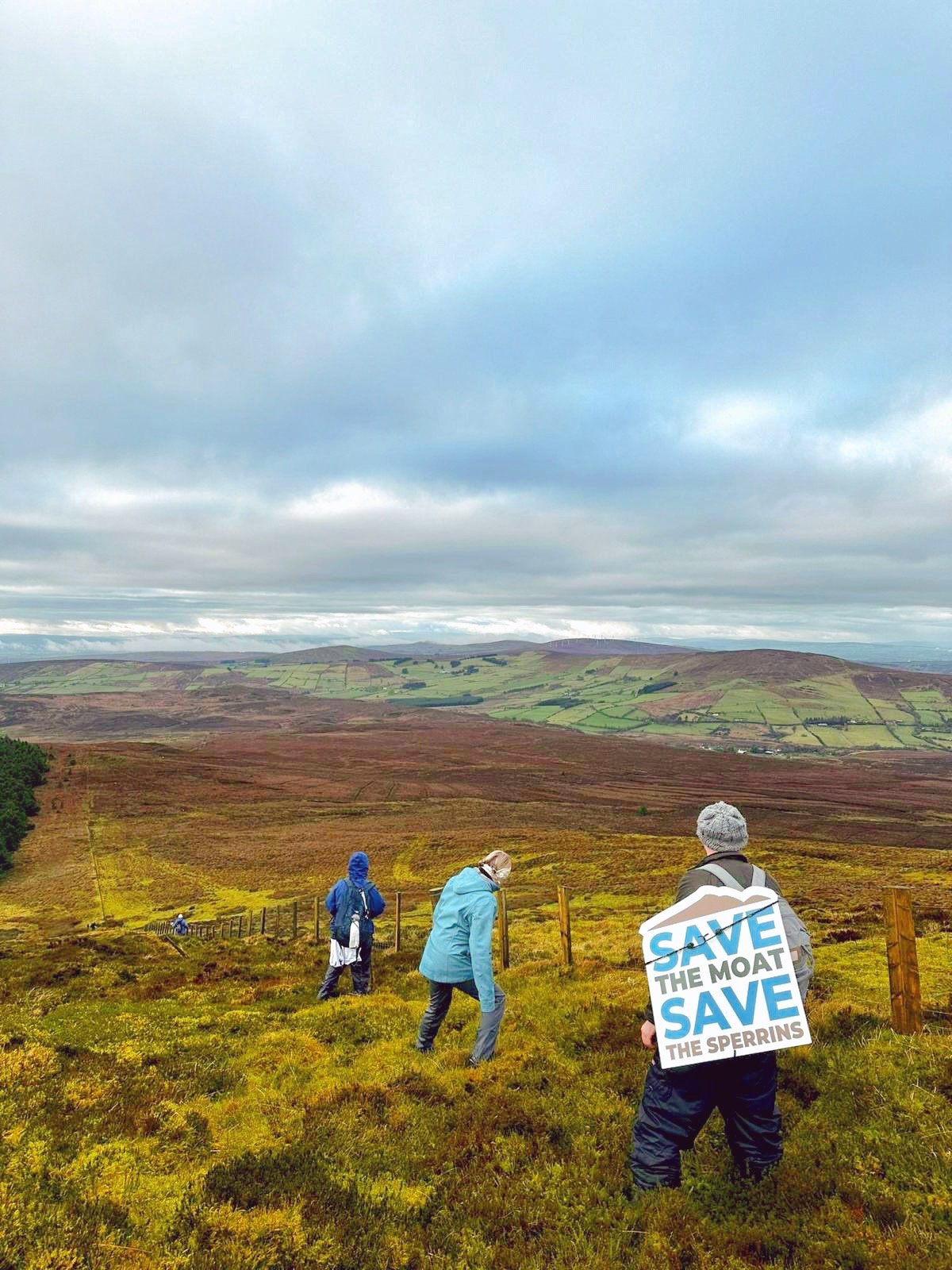

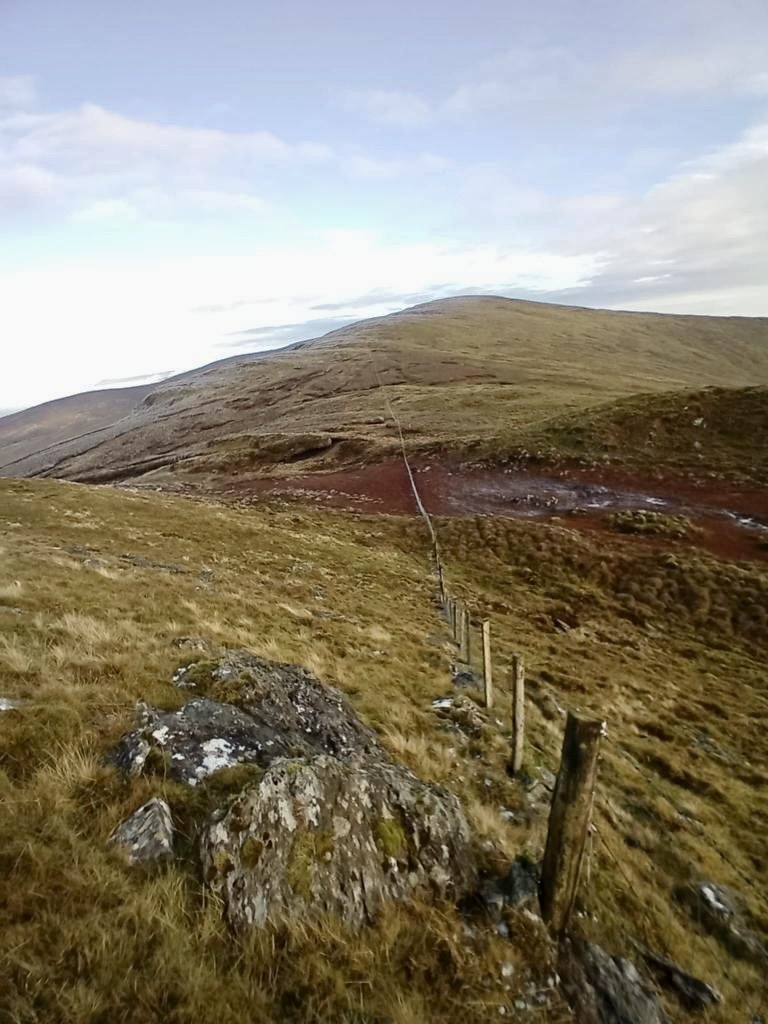

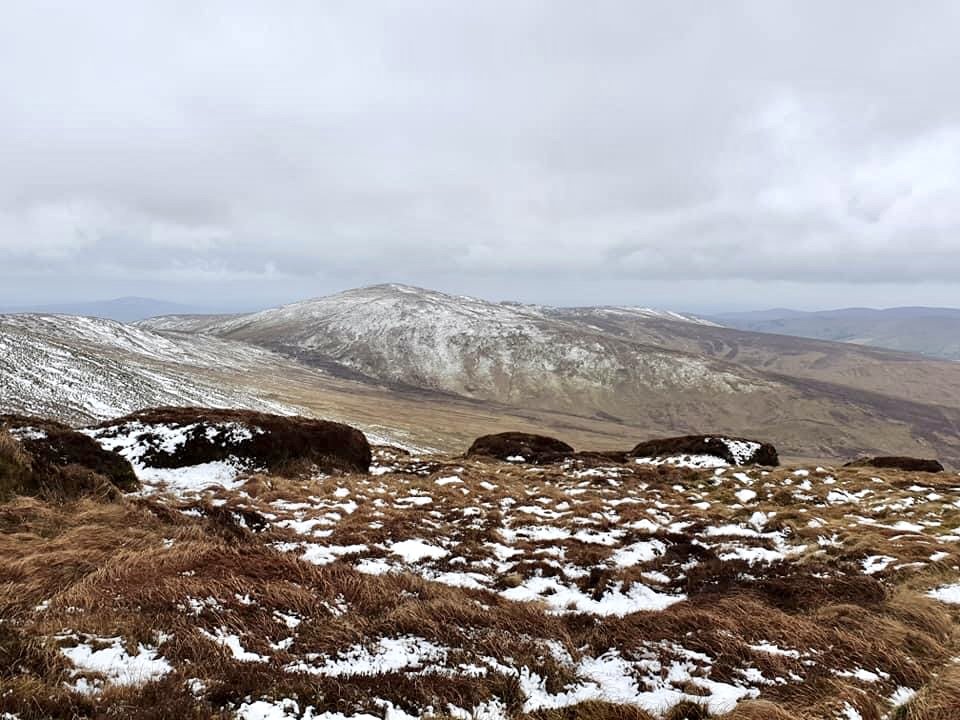






The fundamental concern of STMSTS is that the Sperrins is being overwhelmed by wind farms without sufficient account being taken of their downsides. The Sperrin region, an Area of Outstanding Natural Beauty, faces a looming threat of becoming a dumping ground for enormous, seemingly eco-friendly energy solutions. Currently, we believe, there is an unsustainable focus and over dependence on wind energy development to provide the primary pathway to reaching targets. This over dependence on wind energy, if continued, risks not only our overall energy security, but also risks the small ever decreasing bio diversity and natural heritage asset pool we have here; it impacts negatively on community well- being and health; and it removes fair shared opportunities and benefits for all in our move to a greener and more sustainable planet.
(*In a recent survey of 240 countries Northern Ireland and the Republic of Ireland have the unenviable distinction of being placed 12th among these with most depleted biodiversity and natural heritage.)
Windfarm development and that of its ancillary services (battery storage) without due diligence risks another failure in governance significantly greater than RHI. Vested interests within the industry are now it would appear:
● seeking government subsidies for new investment to enhance profit margins;
● seeking changes in planning to enable faster turnaround in applications;
● asking that if consultee statutory agencies do not reply within strict times to planning
applications, that they forfeit their right to response;
● seeking to reduce the distance recommendations (already inadequate) for
● siting of wind turbines from domestic premises;
● seeking unlimited access to the high hanging fruit- our Areas of Outstanding Natural Beauty;
These same vested interests are also using targets of the Climate Change Act NI 2022 (that 80% of electricity consumption has to be from a diverse mix of renewable sources by 2030) to create an over urgent impression that wind energy is the only route to achieving these targets.
We would hold however that:
● The road to the 2030 targets should be revised.
● Any subsidies should be reserved for renewable solutions other than wind energy and
support battery storage given the high level of investment there is now in this sector.
● Communities must be consulted extensively and in advance of wind farm contracts being signed with landowners; There may be a place for wind farms where communities welcome them, and are sufficiently compensated at personal and community level.
● Areas of Outstanding Natural Beauty are non-negotiable when it comes to windfarm and single wind turbine development;
● Clear weight should be given to a Nature Positive approach to carbon reductions and areas of Outstanding Natural Beauty should be an area of focus for this activity, with subsidies put in place to mitigate any perceived loss in income from wind farm/wind turbine opportunities;
● Wind farm development should not be taking place using outdated standards for noise thresholds including low frequency noise and without ongoing monitoring systems in place to ensure compliance;
● Wind farm developments should be required to have insurance to mitigate against potential negative environmental and public health impacts.
● Wind farm developments should pay a retaining fee to a central government agency to facilitate the decommissioning of future wind farm infrastructure.
● Wind farm development should not be taking place in the absence of Local Development Plans being formally completed; and consultee statutory agencies are fully resourced to respond to wind farm development planning applications.
● There should be an equitable geographic approach taken to renewable energy development and carbon reduction.
Since our establishment last year, our group of volunteers has been meticulous in efforts to gain an understanding of windfarm development and potential impacts. Our initial focus was on our own community however we have developed a wider appreciation of the issue. This is not confined to our small corner of Tyrone but is disrupting communities beyond in our own county and also in Derry-Londonderry, Antrim, and Fermanagh. Down and Armagh have for now managed to avoid the fallout from windfarm development, battery storage facilities, and all the infrastructure which comes with it.
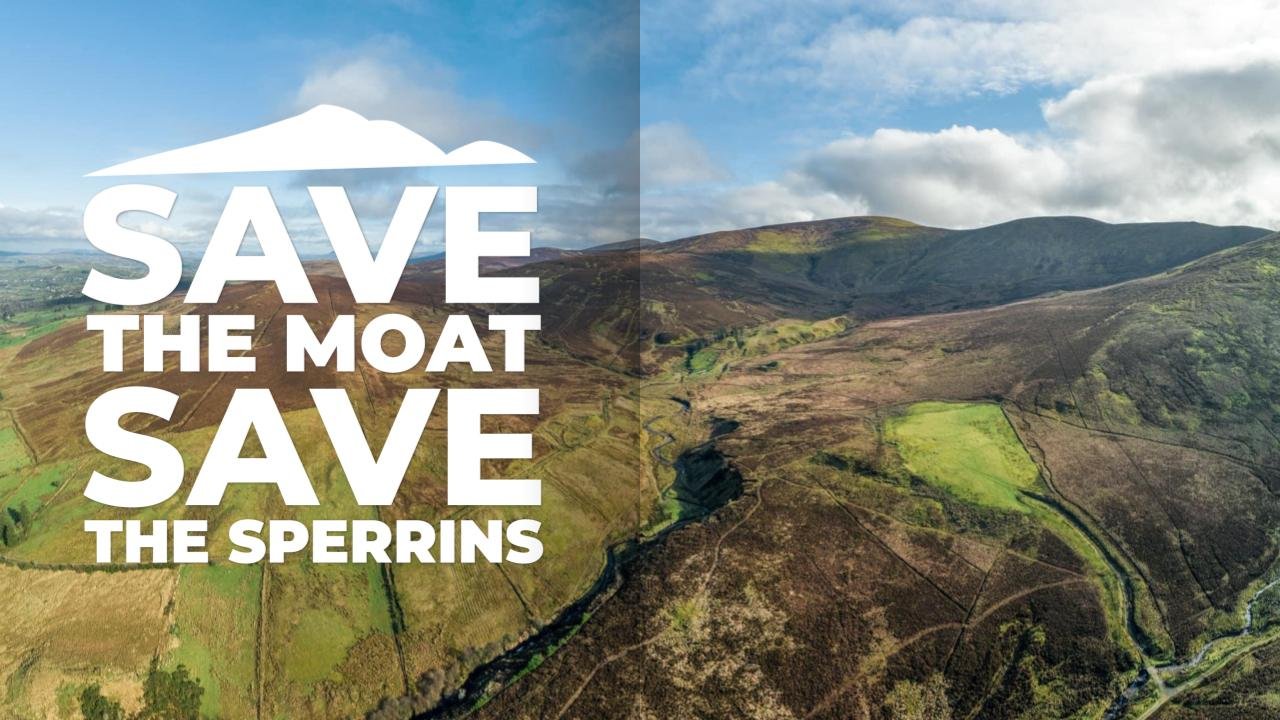
A MUST WATCH




